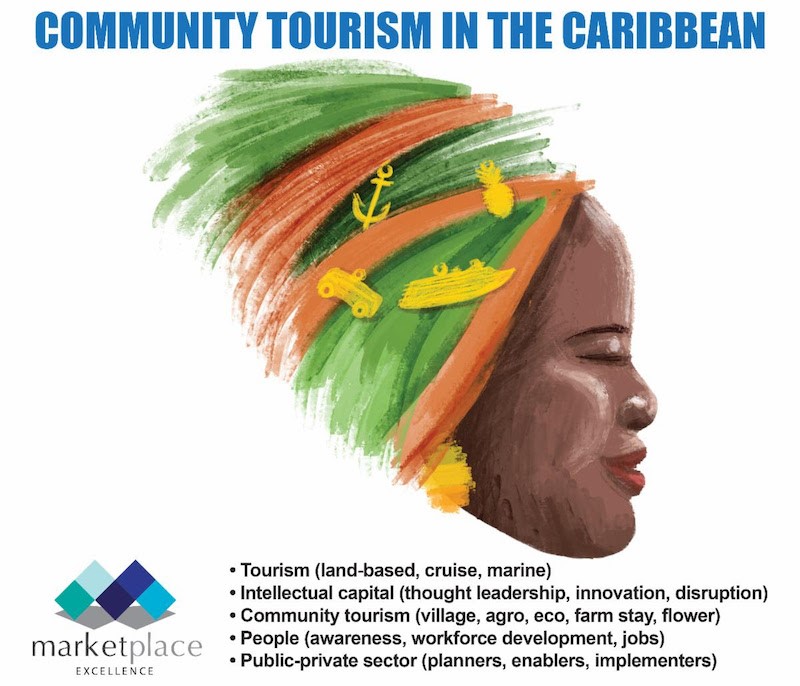
“As iron sharpens iron, so one person sharpens another.” - Proverbs 27:17
Over the last 65 years, more than 30 warm-weather tourism destinations in the Caribbean archipelago of islands and coastal communities have attracted leisure and business visitors alike. Tourism has matured into a world-class service sector.
Our people are our greatest asset, and we must develop them to the fullest. Not until we fully embrace tourism can we claim a sustainable industry.
Community tourism is a catalyst in this regard.
Land-based tourism accommodations range from EP and all-inclusive hotels and resorts and villas to the sharing economy, which is growing exponentially and complements airlift capacity growth into a destination.
Cruise tourism is a world on its own and is twinned with land-based tourism (tours, attractions, restaurants, and activities) to widen the breadth of the seafaring experience.
Marine tourism includes sailing, white water rafting, water skiing, canoeing, kayaking, scuba diving, snorkeling, angling and more sophisticated types of fishing. This has helped buoy the Caribbean tourism industry, especially during the COVID-19 pandemic due to the socially distant nature of the sector.
Thought leadership, innovation and disruption have been the order of the day in battling the pandemic and it seems that with a gradual increase of vaccinated persons we may be seeing some positive light at the end of the tunnel.
The United States Virgin Islands (USVI) designed and implemented sensible public health protocols, facilitated by an effective Travel Screening Portal, and has been an exemplar as to how to manage through a pandemic. The USVI has led the Caribbean in the increased rate of visitor arrivals and has registered strong spending statistics, while protecting its people and visitors from loss of life, sickness from the virus and loss of jobs.
We now must plan for post COVID-19 economic growth, and community tourism, including village, agro, eco, farm stay and flower tourism, could play an integral role.
This creates a major opportunity for better connections with residents. It gets our people involved in the process of tourism growth while at the same time securing the future of families.
It was in Mandeville, Jamaica on July 18, 2002, where I was introduced to the concept of Community Tourism by Diana McIntyre-Pike, founder of the Countrystyle Community Tourism Network. She took us on a tour where the late Butch Stewart, founder of Sandals Resorts International, participated with villagers in stirring cassava to make “bammy”, which was on the menu for tourists lunching with the villagers on that day. Now, some 20 years later, we are still struggling to get community tourism established as a sustainable service to visitors.
People need to be aware of the community tourism opportunity and recognize that this could lead to jobs and propel enterprise development.
The community tourism value proposition has been established. The public and private sectors must work together to create an enabling environment. Investment finance must be secured from godparents, including the Diaspora. Public relations and sales and marketing expertise must be secured to make the public aware of the opportunity. Operational systems must be introduced to increase productivity and nurture the enterprise to profitability. The people, as a major stakeholder, must be trained as to how they can participate in community tourism.
I hope your day is filled with family, friends, and community. Embrace those happy moments that become favorite memories. Happy Valentine's Day!


